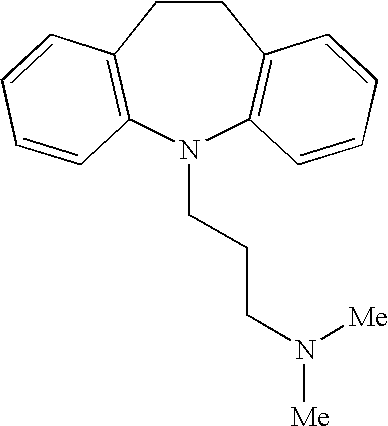Method and medicine for treating gastrointestinal disorder including fecal incontinence
a gastrointestinal disorder and fecal urgency technology, applied in the field of gastrointestinal disorders including fecal incontinence, can solve the problems of little practical long-term benefit of agents, few or none have demonstrated sufficient efficacy or sustainability to be of practical benefit to a majority of patients, and may be precluded from using these preparations for long-term treatment. , to achieve the effect of reducing or eliminating fecal incontinence and/or fecal urgency,
- Summary
- Abstract
- Description
- Claims
- Application Information
AI Technical Summary
Benefits of technology
Problems solved by technology
Method used
Image
Examples
example 1
[0060] A Caucasian female patient, 28 years old, presents with sprain lumbar spine. The spinal injury relates to back pain, with spasms, stress urinary incontinence and stress bowel or fecal incontinence. For example, a sneeze may result in dual bladder and bowel incontinence. On presentment, protective pads are worn to absorb urine and feces.
[0061] The patient is treated with a daily dose of medicine, which includes 75 mg of imipramine pamoate and a stool softener. After several days of daily treatment via oral administration, the patient notes improvement of stress bowel incontinence. The patient stops using protective absorbent pads. The patient tolerates a dry mouth.
example 2
[0062] A Caucasian male patient, 53 years old, presents with a history of tib-fib fracture of his right leg, as well as a back or spinal injury. The patient may have experienced several cerebrovascular accidents (CVA) of unknown etiology within the two years previous. The patient experiences a gradual onset of fecal incontinence with no known precipitating event.
[0063] The patient is treated with a daily dose of medicine, which includes 75 mg of imipramine pamoate and a stool softener. The patient takes TYLOX, oxycontin, neurotin, aspirin, and anti-coagulants. After several days of daily treatment via oral administration, the patient notes control of fecal incontinence, but bowel urgency remains. The patient is able to stop using protective absorbent pads. The patient tolerates a dry mouth and dry eyes.
example 3
[0064] A Caucasian female patient, 43 years old, presents with sprain lumbar spine. The spinal injury relates to back pain, with spasms, urgency and incontinence of the bladder and bowel.
[0065] The patient is treated with a daily dose of medicine, which includes 75 mg of imipramine pamoate. After several days of daily treatment via oral administration, the patient notes full control of bladder and bowel functions. The patient develops constipation and is prescribed docusate sodium (COLACE) in conjunction with the imipramine pamoate. The constipation is relieved by the docusate sodium.
[0066] The patient stops taking the daily dosages. After about three days without treatment, the bowel and bladder urgency and incontinence recur.
PUM
| Property | Measurement | Unit |
|---|---|---|
| Frequency | aaaaa | aaaaa |
| Frequency | aaaaa | aaaaa |
| Frequency | aaaaa | aaaaa |
Abstract
Description
Claims
Application Information
 Login to View More
Login to View More - R&D
- Intellectual Property
- Life Sciences
- Materials
- Tech Scout
- Unparalleled Data Quality
- Higher Quality Content
- 60% Fewer Hallucinations
Browse by: Latest US Patents, China's latest patents, Technical Efficacy Thesaurus, Application Domain, Technology Topic, Popular Technical Reports.
© 2025 PatSnap. All rights reserved.Legal|Privacy policy|Modern Slavery Act Transparency Statement|Sitemap|About US| Contact US: help@patsnap.com



